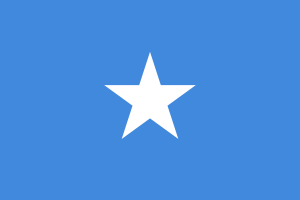Language/Somali/Grammar/Adjectives
Hi Somali learners! 😊
In this lesson, we will explore Somali adjectives. Adjectives are words that describe or modify nouns or pronouns by giving more information about their qualities, quantities, or states. Adjectives play an important role in Somali sentences as they help to convey a more specific and vivid image of a noun or pronoun. Let's dive in and learn more about Somali adjectives!
Take a moment to explore these relevant pages as you conclude this lesson: Conditional Mood, Possession, Negation & Idiomatic Expressions.
Somali Adjectives[edit | edit source]
In Somali grammar, adjectives usually follow the noun they modify. In other words, the adjective comes after the noun it describes. Here are a few examples:
| Somali | Pronunciation | English |
|---|---|---|
| jiinka waaweyn | jee-n-kah wah-weyn | big tree (literally "tree big") |
| subaxnimo jacayl | soo-bahk-nee-moh jah-chayl | lovely morning |
| himilo yar | hi-mee-loh yar | small bird |
As you can see, in Somali, the adjective comes after the noun and agrees with the gender and number of the noun it describes. Adjectives do not change their form to match the case of the noun.
Comparative and Superlative Adjectives[edit | edit source]
In Somali, comparing two nouns or pronouns can be done by adding the suffix -dameer to the adjective. For example, "The moon is bigger than the star" would be "Qamar waa leh habeenka dameertaa".
For superlatives, we use the particle ugu which means "most" or "very" and then add the adjective. For example, "That is the most beautiful flower" would be "Tani waa geed cadaan ugu quruxda badan".
Here's a table to illustrate comparative and superlative adjectives:
| Adjective | Comparative | Superlative |
|---|---|---|
| qurxinta (beautiful) | qurxinti dameer | cadaan ugu quruxda badan |
| weedhsashada (fast) | weedhsashadii dameer | dhegaysi ugu weyn |
| yar (small) | yaraa | ugu yar |
Adjectives Agreement with Gender and Number[edit | edit source]
In Somali, adjectives must agree with the gender and number of the noun they modify. For example, if the noun is feminine, the adjective must be feminine. And if the noun is plural, the adjective must be plural as well.
Here's a dialogue to illustrate adjective agreement:
- Person 1: Hooyo xajiisu waa suuri galaa? (Is your sister-in-law a good cook?)
- Person 2: Haah, haddii adeega hooyo ku yartahay, waxay ka warantaa cuntada. (Yes, if my mother-in-law is small, she's guaranteed to make delicious food.)
In the dialogue above, we see an example of adjective agreement. The Somali adjective "yartahay" agrees with the feminine noun "adeega" (mother-in-law).
Interesting Facts[edit | edit source]
- In Somali culture, it is considered respectful to use titles and honorifics when addressing someone. For example, instead of saying "Ismaaciil waxba ma nimaaday" (Ismaaciil, you haven't come yet), one might say "Waa inaad aheyd Ismaaciil" (It is you, my lord Ismaaciil).
- The Somali language is spoken by approximately 14 million people in Somalia and the Somali diaspora, mainly in Kenya, Ethiopia, and Yemen.
- The Somali alphabet consists of 26 letters, derived from the Arabic script, with the addition of three unique characters: ɗ, ɖ, and ʕ.
To improve your Somali Grammar, you can also use the Polyglot Club website. Find native speakers and ask them any questions!
➡ If you have any questions, please ask them in the comments section below.
➡ Feel free to edit this wiki page if you think it can be improved. 😎
Other Lessons[edit | edit source]
Sources[edit | edit source]
- Somali grammar - Wikipedia
- BEGINNER'S SOMALI GRAMMAR
- Week 7 of loving Somali: I can't survive without grammar – Loving ...

